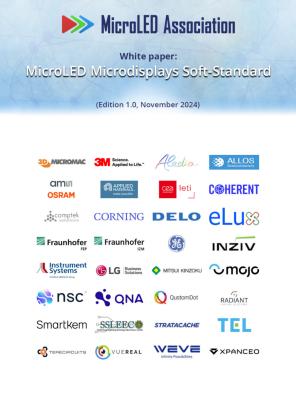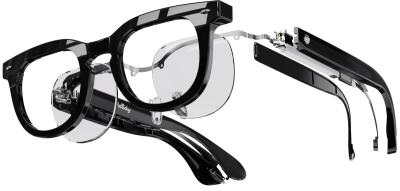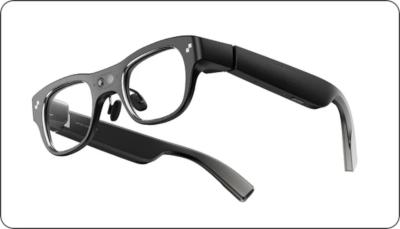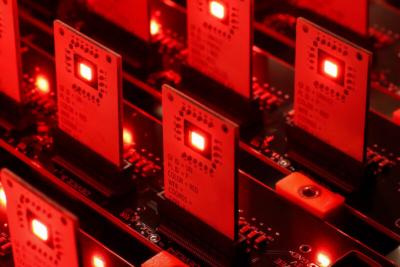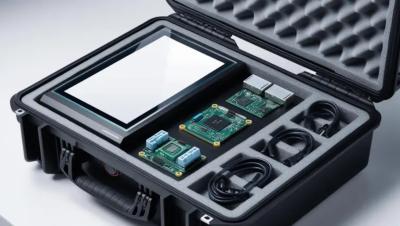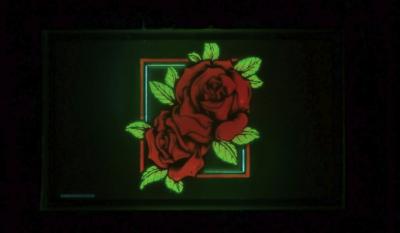MicroLED Microdisplays
MicroLED technology is a next-generation emissive display technology that promises highly efficient and bright displays that offer superior image quality with infinite contrast and a wide color gamut. MicroLEDs are an excellent fit for microdisplays - as it can offer extremely bright and efficient displays with very fine pixel pitches.
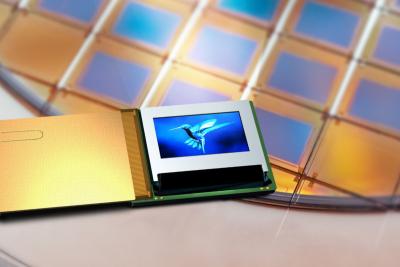
Microdisplays are very small displays (usually under 1-inch) used in near-eye applications such as AR glasses, camera view finders and rifle sights. Most microdisplays on the market are either LCoS or OLED displays.
MicroLED Microdisplays
Many companies are developing high-end MicroLED microdisplays, and some are introducing initial products on the market. In 2020, JBD became the first company to commercially produce microLED microdisplays - 0.3" VGA (640x480) monochrome (red, green and blue) displays. In 2023 JBD started shipping engineering samples of single-panel RGB microLED microdisplays.
Microdisplays use a high-end silicon backplane, and microLED microdisplays can be produced using a monolithic process - which means that the LEDs can be fabricated directly on the silicon wafer, or transferred to it in a process that is simpler compared to a TFT-glass transfer process.
The MicroLED and OLED Microdisplays Market Report
Our MicroLED and OLED Microdisplays provides a great introduction to both MicroLED and OLED microdisplays, and covers everything you need to know about next-generation microdisplays. This is a great guide if you're considering to adopt microdisplays in your product and if you want to understand this industry better.
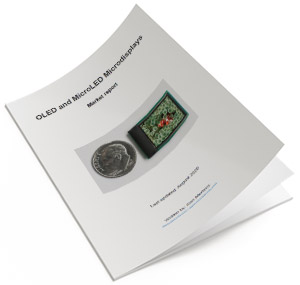
This market report covers everything you need to know about next-generation microdisplays. This is a great guide if you're considering to adopt microdisplays in your product and if you want to understand this industry better. Read more here!
TECNO announces AI glasses powered by microLED microdisplays
Chinese mobile phone manufacturer Tecno Mobile announced a new smart glasses product, called the Tecno AI Glasses Pro that utilize microLED microdisplays.
The company did not detail much, but we do know that the displays offers a 30-degrees FOV, and over 1,500 nits of brightness. It seems as if these displays are monochrome (green), and are likely produced by JBD.
MicroLED-Connect to host a 2-day MicroLED and AR/VR innovations virtual event next week!
Next week, on March 6-7, MicroLED Connect will be hosting a two-day virtual event focused on MicroLED and AR/VR innovations, technologies, manufacturing, markets and more. The online event will be an excellent opportunity to learn the latest microLED and AR/VR updates and connect with industry professionals on our excellent online event platform.
The virtual 2-day conference will include over 25 exciting talks by leading microLED developers, AR/VR developers, supply chain companies and top-edge researchers. This will be an excellent opportunity to learn and connect with the microLED industry, on an easy to access virtual event. You can register here, with a yearly pass to MicroLED-Connect (with an option to also include entry into our September on-site event in Eindhoven, The Netherlands). Our members also gain access to past event recordings.
The MicroLED Association publishes the second version of its microLED microdisplay soft-standard document
The MicroLED Industry Association published the second edition of its soft-standard document, that focuses on microLED microdisplays. The new edition adds to the original document, with a discussion on system performance and more system considerations.
Most analysts and developers agree that the AR market is one of the targets for microLED displays. MicroLED microdisplays offer many advantages for AR developers – mainly very high brightness and high efficiency. In this soft-stsandard document, the MicroLED Industry Association provide guidelines for microdisplay developers and device makers, identifying the different properties of microLED microdisplays and microdisplays-based systems and suggesting how to disclose display metrics and performance.
Apple is reportedly developing microLED microdisplay technologies for future AR devices
According to Bloomberg, Apple has established a secretive facility in Santa Clara, to develop microLED microdisplay technologies for future AR headsets.
The report suggests that Apple is not looking to launch its microLED AR headset before 2028, or likely even before 2030. This coincides with the MicroLED Association's own industry and market roadmap.
Halliday launches microLED powered AR glasses
Halliday launched their first AR glasses, called simply the Halliday Glasses. These enable a rather unique AR solution, that uses a monocular direct projection into the eyes without waveguides. The display engine is a green monochrome microLED microdisplay - likely produced by JBD.
The Halliday Glasses launched in a crowdfunding campaign, with a price tag of $400 (including a $90 discount for early supporters). The company aims to deliver the first products by April 2025. The company already has over 3,500 supporters and has raised over $1.4 million (with 41 days left to the campaign).
RayNeo announces the X3 Pro AR headset with the world's smallest microLED based optics
RayNeo announced its latest AR headset, the RayNeo X3 Pro, powered by full color microLED displays. The company says that the optical engine is ultra compact - and is in fact the world's smallest mass-producible full-color micro-LED optical engine. It is based on three monochrome microLEDs and can deliver up to 2,500 nits of brightness.
The RayNeo X3 Pro is based on Qualcomm's Snapdragon AR1 Gen 1 Platform, and it features a dual-camera system, one for high-definition photography and AI applications, and the second, lower power and with a wide field of view, for perception (such as SLAM and hand tracking).
Plessey and Meta develop a 6 million nits 5 micron microLED microdisplay
Plessey Semiconductors, together with Meta Platforms, announced that they have developed a native red microLED microdisplay that achieves up to 6 million nits with a chip size of 5 um. Plessey says that this is world's brightest microLED device at this size.
In March 2020, Meta signed a deal with Plessey to dedicate all of Plessey's microLED manufacturing operations to support Meta with its own product development. Facebook pretty much acquired Plessey's microLED operations with this exclusive deal.
Aledia officially launches microLED microdisplays as its $200 million fab enters production
France-based microLED developer and MicroLED Association member Aledia announced that it has finished the construction of its $200 million microLED production line in Grenoble, and the company is now starting to produce AR microLED microdisplays based on its 3D Nanowire platform.
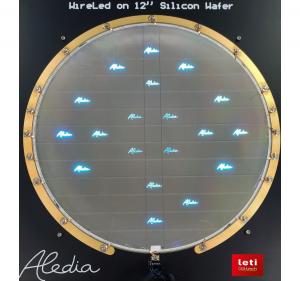
The new microLED microdisplays are full color displays, based on monolithically grown native red, green and blue devices. The company says that is 3D GaN Nanowire material platform is more efficient and bright than regular (2D) LEDs. The company grows the LED on 8-inch and 12-inch silicon wafers, and can currently ramp up to almost 20,000 monthly wafers.
VueReal unveils new microLED technologies and products at CES, shows how microLEDs differ from traditional displays
MicroSolid Printing pioneer VueReal is going to unveil several new technologies and products at CES, as the company gets ready for microLED display commercialization. VueReal wants companies to take advantage of the unique properties of microLED displays (mainly the customized production process and the high transparency and high brightness) and this year it will focus on new applications that can be enabled only by microLEDs.
First up, VueReal is launching new microLED Design Reference Kits to enable product designers to buy display samples and integrate into new designs. The first kit will provide microLED-powered lighting panels. These resemble OLED lighting panels - area lighting that is uniform. But unlike OLEDs, microLEDs will provide high brightness, long lifetime, and reduced costs. These are basically monochrome simple displays, and VueReal will offer either in native colour (R, G, B) or phosphor coated (white, red, amber).
Foxconn to build a microLED microdisplay fab in Taiwan based on Porotech's DPT technology
A year ago Foxconn announced a strategic partnership with Porotech to co-develop microLED microdisplays, targeting AR, wearable and other applications. Foxconn said that this partnership will utilize Porotech's Dynamic Pixel Tuning color-tunable GaN-on-Silicon microLED technology and Foxconn's technologies in semiconductor wafer manufacturing, packaging, IC drivers, CMOS backplanes, module assembly and system assembly.
According to a new report from China, Foxconn plans to build a microLED epiwafer production line in Taichung, Taiwan. Foxconn aims to start mass production by the end of 2025.
Pagination
- Page 1
- Next page




